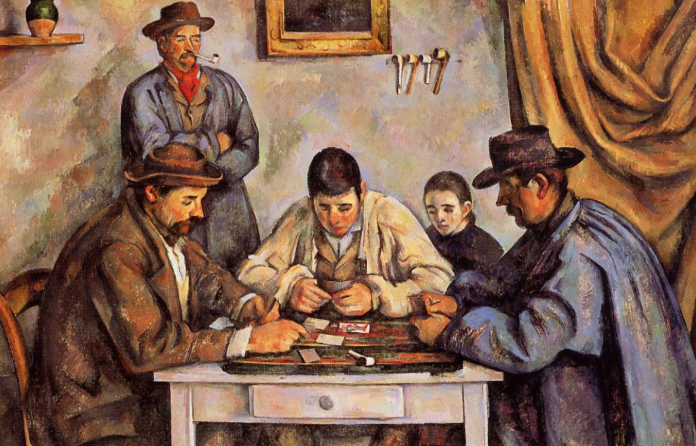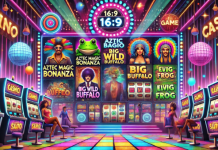Gambling has been a popular form of entertainment for centuries, offering people a way to experience thrill, risk, and excitement. Throughout history, artists have captured the essence of gambling, often using it as a subject to explore human nature, society, and the subtleties of fate. The tension, the potential for victory or loss, and the psychological states of those who engage in gambling have provided endless inspiration for painters across different eras.
Online casinos are becoming increasingly popular among gambling enthusiasts, providing access to a wide range of games right from home. Among the many online platforms, Richard casino stands out for its variety of games, generous bonuses and security. Players can enjoy classic games such as poker and roulette, as well as modern slots and tournaments offering the chance to win big prizes.
In this article, we will explore some of the most famous paintings that depict gambling, each offering a unique perspective on the theme. From classic works by Michelangelo Merisi da Caravaggio to modern interpretations like Shelley Wilkerson’s “Slot Machine Queen,” these paintings represent the timeless allure of gambling and its place in human culture.
“Cardsharp Cheaters” by Michelangelo Merisi da Caravaggio
Michelangelo Merisi da Caravaggio’s “Cardsharp Cheaters” (1594–1596) is one of the earliest and most iconic depictions of gambling in art. This painting, which marked Caravaggio’s rise to fame, captures a dramatic scene of a young, naïve man playing cards with two cunning cheats. Caravaggio’s signature use of chiaroscuro (the contrast between light and dark) enhances the emotional intensity and narrative complexity of the painting.
In the scene, the young man is oblivious to the deception unfolding around him. One of the cheaters gestures towards his accomplice, who is discreetly revealing the cards. The sharp contrast of expressions on their faces—the innocent curiosity of the young player and the sly glances of the cheaters—underscores the drama. The dagger worn by one of the cheaters symbolizes the potential danger inherent in gambling, hinting that this game could end not just in loss but in violence.
Caravaggio’s portrayal of gambling is not a celebration of the activity but rather a moral lesson, warning viewers of the dangers of trusting the wrong people and the unpredictability of fortune. This painting remains a masterpiece of psychological insight and narrative depth, currently housed in the Kimbell Art Museum in Fort Worth, Texas.
“Card Players” by Paul Cézanne
French Post-Impressionist Paul Cézanne’s series “Card Players” (1890–1896) offers a very different take on the world of gambling. Unlike Caravaggio’s tense, dramatic depiction, Cézanne presents a more subdued, almost meditative atmosphere. His series of five paintings shows peasants engaged in a card game, but the focus is not on the excitement of gambling or the tension of cheating. Instead, Cézanne’s players appear indifferent to the game itself, as if it were merely a part of their daily routine.
The peasants’ faces are solemn and focused, giving the impression that the game is more a means of passing time than an opportunity for excitement or enrichment. The stillness of the scene suggests that the card game is a habitual activity, reflecting the simplicity and monotony of rural life in the late 19th century.
Cézanne’s use of muted colors and repetitive compositions across the series contributes to the overall feeling of calm and detachment. While gambling is traditionally associated with excitement and risk, Cézanne’s “Card Players” offers a more contemplative view, focusing on the ordinariness of the activity. Four of the paintings in this series are currently in museums across Europe and the U.S., while the fifth was sold to the Qatari government for the National Museum.
“At the Roulette Table in Monte Carlo” by Edvard Munch
Edvard Munch, the Norwegian Expressionist best known for his iconic work “The Scream,” delves into the world of gambling in his painting “At the Roulette Table in Monte Carlo” (1892). Inspired by his personal fascination with the high-stakes world of roulette, Munch captures the psychological tension and emotional turmoil of the casino environment.
In this work, Munch’s characteristic use of distorted forms and exaggerated colors emphasizes the nervous energy that pervades the roulette table. The players are depicted with strained, tense faces, their bodies contorted with anxiety as they await the outcome of the spinning wheel. For Munch, the roulette table becomes a metaphor for the unpredictability of life itself, where chance dictates fortune or ruin.
Munch’s fascination with the psychological aspects of human experience is vividly portrayed in this piece. The painting conveys the duality of gambling—both the allure of possible victory and the despair of loss. It currently resides in the Munch Museum in Oslo, Norway, where it continues to captivate viewers with its intense emotional atmosphere.
“Dogs Playing Poker” by Cassius Marcellus Coolidge
Perhaps one of the most famous and widely parodied depictions of gambling is Cassius Marcellus Coolidge’s “Dogs Playing Poker” series. Created between 1903 and 1910, these paintings feature anthropomorphized dogs seated around a table, deeply engrossed in a game of poker. Though originally commissioned as advertising art for Brown & Bigelow to promote cigars, the series has since transcended its commercial origins to become a staple of American pop culture.
The charm of Coolidge’s paintings lies in their humorous, lighthearted portrayal of gambling. The dogs are depicted with human-like expressions, holding cards in their paws, smoking cigars, and drinking alcohol. Despite their obvious absurdity, the paintings manage to capture the dynamics of a real poker game—the bluffing, the tension, and the camaraderie.
While “Dogs Playing Poker” may not offer the psychological depth or technical mastery of other works on this list, its enduring popularity speaks to the universal appeal of gambling as a subject in art. The series has been widely reproduced, and two of the paintings were sold for $590,400 at a 2005 auction in New York.
“Soldiers Playing Cards” by Fernand Léger
French Cubist painter Fernand Léger’s “Soldiers Playing Cards” (1917) offers a modern, mechanized interpretation of gambling during wartime. Painted during World War I, this work reflects Léger’s fascination with the intersection of human life and machinery. The soldiers in the painting are not depicted as individual characters but rather as abstract forms, almost as if they were components in a larger machine.
The cubist style that Léger employs in this painting emphasizes fragmentation and abstraction, representing the soldiers as disjointed parts. This mechanical representation reflects Léger’s view of the soldiers as elements in the grand machine of war. The card game, typically a symbol of chance and leisure, becomes another mechanized process in the context of war, devoid of excitement or emotion.
“Soldiers Playing Cards” is a powerful commentary on the dehumanizing effects of war and the way it reduces individuals to mere functions within a system. The painting is currently housed in the Kröller-Müller Museum in the Netherlands, where it stands as a stark reminder of the changing role of gambling and games during times of conflict.
“Slot Machine Queen” by Shelley Wilkerson
Moving into the 21st century, “Slot Machine Queen” (2011) by contemporary American artist Shelley Wilkerson represents a modern evolution of gambling in art. This satirical painting highlights the transformation of gambling from traditional card games to the bright, computerized world of slot machines.
Wilkerson’s painting humorously depicts a woman at a slot machine, engrossed in the flashing lights and digital screens that have come to define modern casinos. The caricatured style of the painting emphasizes the absurdity of the scene, poking fun at the mindless nature of slot machine play. Unlike traditional card games, which involve strategy and skill, slot machines are purely games of chance, relying on the player’s hope for a lucky spin.
“Slot Machine Queen” became an internet sensation, widely shared and discussed for its playful yet critical take on modern gambling culture. It reflects the growing dominance of electronic gambling and the way it has reshaped the experience of gaming.
Conclusion
Across centuries, gambling has remained a compelling subject for artists, serving as a lens through which to explore themes of chance, risk, human nature, and society. From the psychological drama of Caravaggio’s “Cardsharp Cheaters” to the satirical charm of Coolidge’s “Dogs Playing Poker,” each artist offers a unique perspective on the world of gambling.
These paintings remind us that gambling, while often associated with entertainment, carries deeper implications about human behavior, the unpredictability of fate, and the complexities of society. They serve as both celebrations and critiques of gambling, capturing its many facets—from harmless pastime to dangerous obsession. Ultimately, these works reflect not only the act of gambling itself but the broader human experience of risk and reward.




